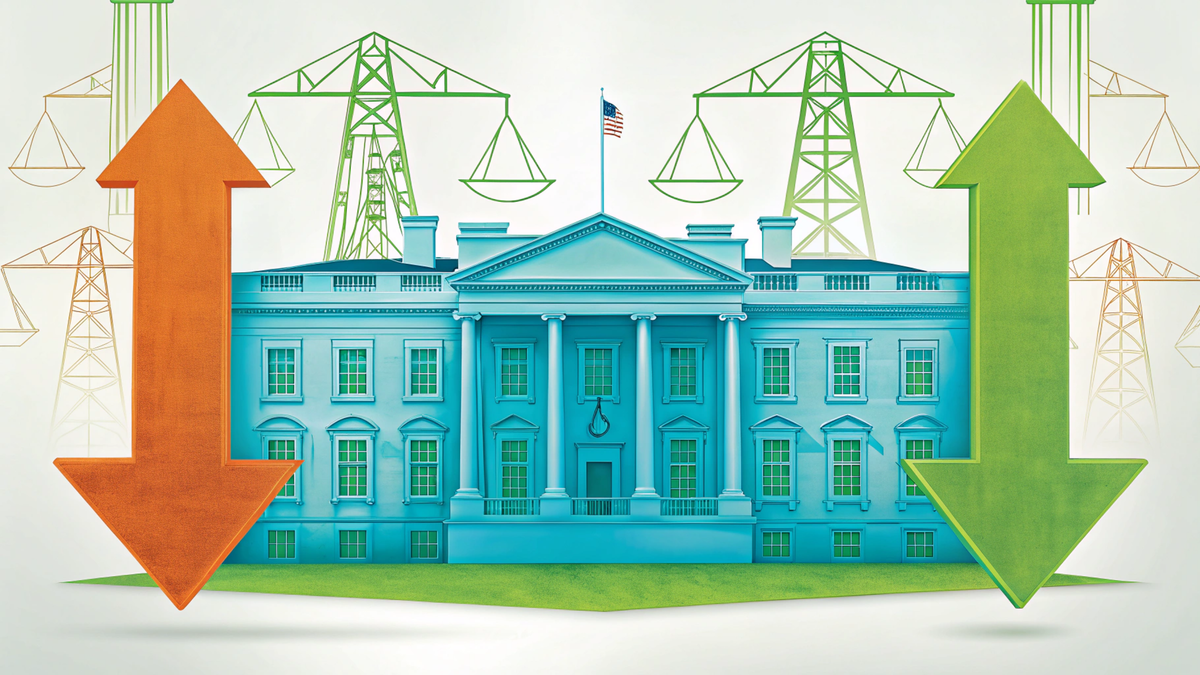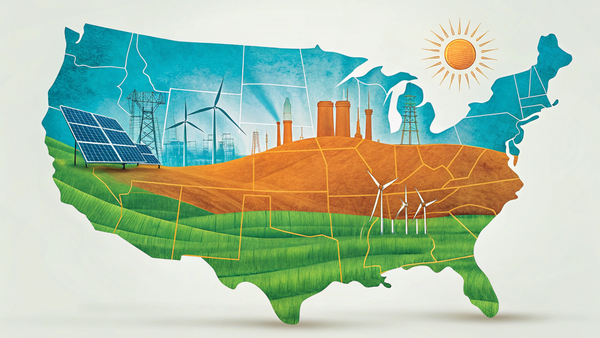Impacts of the One Big Beautiful Bill on the U.S. Energy Transition
EER's latest REPEAT modeling shows how the OBBB derails the energy transition by raising emissions, increasing household energy bills, and slowing clean energy investment.

Introduction
America’s clean‑energy transition has been unsettled by the now-enacted One Big Beautiful Bill Act of 2025 (OBBB), which rolls back most of the incentives, investments, and standards that have guided the energy transition since 2022. The REPEAT Project (Princeton University's ZERO Lab x Evolved Energy Research) has updated its analysis to understand the consequences of the policy shift.
The bottom line: The OBBB raises energy costs for households and businesses, slashes clean energy investment, disrupts both new and planned energy infrastructure, and leads to higher U.S. greenhouse gas emissions.
Table 1: Modeled impacts of the OBBB in addition to impacts of the Executive Repeal scenario.
| Impact | 2030 | 2035 |
|---|---|---|
| Higher total energy spending | +$28 B / yr | +$50 B / yr |
| Higher avg. household bill | +$165 / yr | +$280 / yr |
| Extra GHG emissions | +190 Mt CO₂e | +470 Mt CO₂e |
| Cumulative capital investment lost | ‑$0.17 T | ‑$0.51 T |
Key Results
In this analysis, we quantified the projected impacts of the One Big Beautiful Bill relative to an Executive Repeal scenario, which already assumes the unwinding of many Biden-era climate regulations and a freeze on unspent funding. This comparison highlights the additional, more severe consequences expected from enacting this law beyond executive-level changes. We also modeled Biden-Era Policies and Net-Zero Pathway scenarios as benchmarks.
Elevated Emissions: While an Executive Repeal alone increases U.S. GHG emissions, the OBBB further increases emissions by approximately 190 million metric tons per year in 2030 and 470 million metric tons per year in 2035 compared to Executive Repeal. The OBB alone erodes 20 % of the emissions cuts needed this decade.
Figure 1
Higher Energy Costs: The OBBB adds significantly to consumer and business energy burdens by raising U.S. household and business energy expenditures by an additional $28 billion annually in 2030 and over $50 billion in 2035 relative to Executive Repeal. Average U.S. household energy costs would increase by roughly $165 per year in 2030 and over $280 per year in 2035.
Reduced Investment: The OBBB halts clean energy investment, reducing capital investment in U.S. electricity and clean fuels production by an additional $0.5 trillion from 2025–2035 compared to the Executive Repeal. This means fewer construction jobs, factory expansions, and tax revenue.
Less Clean Energy Deployment: The OBBB reduces cumulative new solar capacity additions by ~29 gigawatts and wind capacity by ~43 gigawatts from 2025–2030, and by ~140 gigawatts (solar) and ~160 gigawatts (wind) through 2035, all relative to the Executive Repeal scenario.
Figure 2
Continued Support for Some Technologies: The OBBB does allow for more additions of certain technologies, such as geothermal and gas with carbon capture and storage, as these specific technologies maintain subsidies, unlike in a full legislative repeal of all incentives.
Figure 3
Where do States Go From Here?
The repeal of federal incentives threatens to slow the nation’s momentum toward a low-carbon economy, forcing states to reconsider their strategic planning efforts. With tax credits for solar, wind, and electric vehicles—technologies responsible for most of the recent progress in decarbonization—now rescinded, states must evaluate how to adapt. Meanwhile, the continued support for nuclear energy, geothermal technologies, and carbon capture suggests these sectors may offer more politically stable investment opportunities going forward.
Whither Batteries?
Although batteries currently remain eligible for the 48E tax credit, new restrictions related to Foreign Entities of Concern (FEOC) and material sourcing thresholds pose a significant threat to continued eligibility. In this analysis, we assume that starting in 2026, these provisions will effectively disqualify most battery projects from receiving tax credits. If this assumption holds, the resulting disruption to project development pipelines could be severe—potentially derailing deployment plans for a technology that is increasingly critical to maintaining grid reliability.
When must Projects "Commence Construction"?
One of the most contentious elements of the OBBB negotiations between the House and Senate centered on how rapidly to phase out clean energy tax credits. House hardliners pushed for an almost immediate repeal—within 60 days—offering only narrow exceptions for projects already under construction, and even then requiring they be placed in service by 2028. The Senate initially resisted this strict approach, eventually settling on a compromise that imposed varying restrictions depending on whether a project could begin construction within the current calendar year.
This compromise effectively created a "commence construction" threshold, incentivizing developers to fast-track projects in order to qualify. While the House was unable to overturn the Senate’s revisions without reopening broader negotiations—risking the July 4th legislative deadline—they received assurances from President Trump that he would act unilaterally. On Monday, he followed through with an executive order challenging the interpretation of what constitutes "commence construction."
This move casts further doubt on the ability of wind and solar projects to access remaining tax incentives and introduces even greater uncertainty for project developers. As a result, the already conservative assumptions in our modeling may underestimate the scale of future disruptions to renewable energy deployment.
Why This Matters
Reviewing the immediate and long-term impacts of this new law, the contradictions are unavoidable. Rather than emboldening industry, all analyses points to forthcoming burdens on U.S. citizens and businesses that increase costs, implement roadblocks, and stymie innovation. While other parts of the world race to lead the energy transition, this law mires U.S. industry while bolstering bygone technologies and fossil fuels.
- Economic headwinds – $0.5 T in skipped investment = fewer construction jobs, factory expansions, and tax revenue.
- Industrial strategy – Repeal undercuts domestic battery, hydrogen, and CCS supply chains just as they scale.
- Climate trajectory – Senate bill alone erodes 20 % of the emissions cuts needed this decade.
- Grid reliability & cost – Delayed clean capacity builds increase exposure to fuel‑price volatility.
-Jesse Jenkins, co-author & Princeton Professor.
The unfortunate truth is that the combination of the impacts from this law–the financial hit to businesses and families, the climate impacts from the uptick in GHG emissions, and the loss of infrastructure investment in clean energy–create a fertile ground for actors like China to leave the United States behind in energy and technology.
As co-author and Princeton Professor Jesse Jenkins describes in an interview with The Atlantic, “Just think of Trump’s own priorities: lower energy prices, becoming an AI superpower, reindustrializing America, outcompeting China. Getting rid of these credits hurts all of those goals.”
Resources:
Further Reading

- Reuters – Trump's big bill shrinks America’s energy future
- Financial Times – What Trump’s ‘big, beautiful bill’ means for corporate America
- Financial Times – Trump’s political gift to the clean energy sector
- HeatMap – How the OBBB Changed America's Clean Energy Policy










